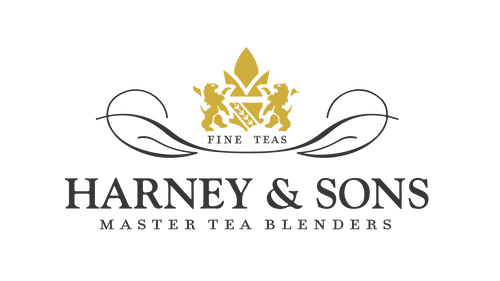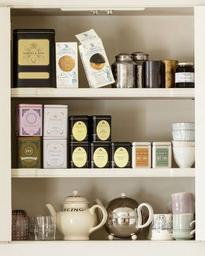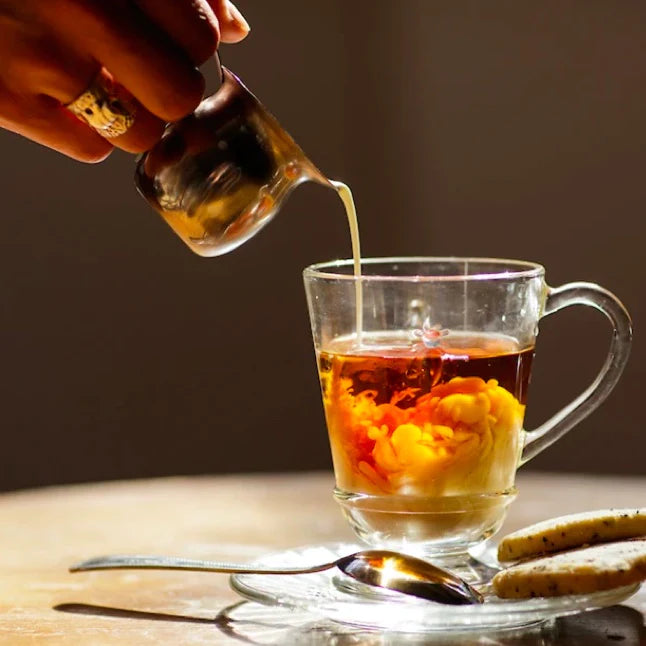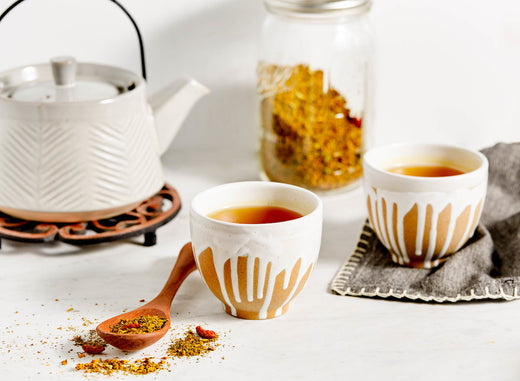Have you ever wondered where exactly Harney & Sons tea comes from? The simple answer is… nearly every corner of the world. But where’s the fun in stopping there? Let’s take a journey through the tea regions, which span seven countries and three continents, that help make Harney’s blends so distinct and unique.

Japan
For over 35 years, we have been importing teas directly from Japan. Our family has spent decades building long, personal relationships with the best tea growers in the industry. My dad, our tea buyer Elvira, and I travel to various parts of Japan in search of the best teas the region has to offer. Spoiler alert: it’s more than you can imagine!
Tea is produced almost everywhere in Southern Japan, but there are five major tea regions across the country: Kagoshima, Mie, Shizuoka, Uji, and Wazuka. On my dad’s first trip to Japan about 20 years ago, a wise tea man said: Kagoshima is the earliest, Shizuoka makes the most, and Uji makes the best tasting. That man was from Uji, but it still holds true(mostly!)
Around 40% of Japan’s tea plantations are located in Shizuoka, thanks to its mountainous terrain, mild climate, and abundant rainfall. Believe it or not, these factors create ideal conditions for tea cultivation. As a result, Shizuoka is one of Japan’s most renowned tea-producing regions, celebrated for its high-quality green teas like Japanese Sencha – a pleasant and approachable green tea that’s perfect for everyday enjoyment, just like my grandfather, John Harney, who always began his mornings with a cup.

Kagoshima is Japan’s second-largest producer of unprocessed tea. Located on the southern tip of Japan’s southern Kyushu Island, this region accounts for roughly 30% of the country’s total tea production. The climate is mild, but the active Sakurajima volcano provides the region with mineral-rich, fertile soils that produce some of the best Sencha teas in the world. Many Kagoshima teas are grown pesticide-free or organically, making them popular among health-conscious tea drinkers!
For centuries, the Uji province has been the center of tea and ceramics. When Kyoto became the old Imperial capital of Japan, a variety of products were made for the court in the surrounding regions. In turn, they found that the Uji province produces some of the best shade-grown Gyokuro & Matchas available! Why choose a shade-grown green tea over others? The shade increases chlorophyll content, giving the tea leaves a vibrant green color, while also enhancing compounds that add depth and sweetness to the tea!
China
As the birthplace of tea, China’s history and impact are unmatched in the tea world. There are five main regions from which we source our tea: Anhui, Fujian, Hunan, Yunnan, and Zhejiang. Due to its size, diverse climate, and varying terrains, each region has unique conditions that play a crucial role in shaping the flavors and characteristics of the teas produced there.
Let’s start in the Anhui Province, located in Eastern China. We were very impressed when we visited the region a few years ago. While it’s not the largest or wealthiest province in China, it is home to the stunning Huangshan mountains and world-renowned tea. The high mountains and misty climate are ideal for slow-growing, flavorful tea leaves ranging from green, black, and yellow.
English Breakfast , one of our best sellers, is sourced from the same region where it became popular in the 1800s, it’s simply China black 100% Keemun.
 Another popular region we love to visit and source from is Fujian. This coastal province is located in Southeast China and is best known for its exotic white teas, divine jasmine teas, earthly oolongs, and flavorful black teas. With a hilly terrain, Fujian is said to be “eight parts mountain, one part water, and one part farmland.” Tea plants thrive in this type of subtropical climate and the tea farmers have used that to their advantage, developing a diverse variety of teas. My dad took his first trip to the Fujian province in 1996 and hasn’t looked back since!
Another popular region we love to visit and source from is Fujian. This coastal province is located in Southeast China and is best known for its exotic white teas, divine jasmine teas, earthly oolongs, and flavorful black teas. With a hilly terrain, Fujian is said to be “eight parts mountain, one part water, and one part farmland.” Tea plants thrive in this type of subtropical climate and the tea farmers have used that to their advantage, developing a diverse variety of teas. My dad took his first trip to the Fujian province in 1996 and hasn’t looked back since!
Mutan White, which we enjoy using in our scented blends based on white tea, and Dragon Pearl Jasmine are two of our favourite teas, both produced in Fujian.

We saved the best Chinese tea region for last! Just kidding, we don’t play favorites, but Zhejiang province is one of the largest tea producers in the country. Located in the middle of the east coast of China, this region is known as the Golden Triangle. As with all great tea-growing climates, Zhejiang is primarily subtropical. While experiencing mild fall and winters, this region receives above-average rainfall through the spring and summer months, including impacts from the occasional typhoon. Still, its lush, misty mountains create the ideal conditions for high-quality tea, like our organic Gunpowder with its sharp, charred flavor.

India
It may come as a surprise, but India is second only to China in the production of tea. There are more than 100,000 tea estates across the country and it’s estimated that 70 percent of the tea produced there is consumed by its own people. It’s fair to say, India is crazy about their tea! In fact, if you visit India you’re likely to see chaiwalas, people who prepare and sell tea from small stands or shops, in city markets, on street corners, and even on the side of the road!

The largest tea-growing region in India, perhaps in the world, is Assam. These teas are derived from the Camellia sinensis assamica, a large-leafed variety of tea grown in wet and humid conditions. Assams are among the most assertive and brisk of black teas, yielding lovely honey and malty flavors.
It’s no secret we like the finer things in life, which is why we always enjoy sourcing from the Darjeeling region. Nicknamed the “champagne of teas, both because the tea crops vary from year to year like grapes and because to be called a Darjeeling tea, it must be grown, harvested, manufactured, and processed in the tea gardens of Darjeeling. As if the region couldn’t get any more unique, it is one of the highest-altitude tea-growing territories in the world. In the cool air and hardscrabble soil of the Himalayan foothills, the leaves grow slowly, taking on lovely variegated flavors. Our Darjeeling tea is a blend of 1st flush and autumnal teas from the best gardens Darjeeling has to offer.
Africa
Though not known for traditional tea, South Africa is famous for its herbal infusions like rooibos and honeybush. Grown in the Cederberg and Cape regions, these plants thrive in the dry climate and nutrient-rich soil. Known as “red bush,” rooibos is a naturally caffeine-free blend that offers a sweet, earthy flavor. Aside from its smooth taste, it’s also packed with antioxidants that support overall health. Rooibos is a perfect base for our scented blends, naturally caffeine-free.

Explore the Regions
Believe it or not, we have only scratched the surface of our sourcing stories. Visiting these regions, selecting, and creating blends is absolutely a labor of love. Our family's passion for delivering quality tea has taken us to corners of this Earth that we never expected.




